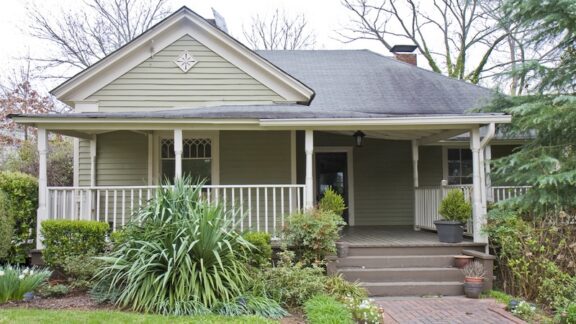Upgrading a home to ensure safety and accessibility for older residents can involve a variety of renovations. Seniors Guide writer Kari Smith addresses the importance of choosing the best flooring for aging in place.
Many older adults choose aging in place – remaining in their own homes – rather than relocating to a senior living community. Seniors who choose this option do so for many reasons, from financial to emotional. Some may even want to embrace the growing trend of multigenerational living.
When choosing to age in place, having a safe, accessible home is essential. Senior living communities were designed with features to accommodate the physical challenges of older adults, but most existing homes were not. Instead, residents need to make changes to ensure continued safety at home.
Some changes are obvious: ramps, step-in showers, easy-to-turn knobs and switches. One factor is often overlooked, but it’s right there at your feet: flooring, which impacts mobility and fall prevention.
Brooke Selden, of Costen Floors based in Richmond, Virginia, holds a Certified Aging in Place Specialist (CAPS) certification from the National Association of Home Builders. She shared her insights on the best flooring materials for aging in place.
When choosing flooring for aging in place, consider:
1. The value of a firm, nonslip surface
Flooring for an aging-in-place home should ideally be firm, nonslip, and level throughout. While floors should ensure mobility – easy for walking as well as for maneuvering walkers and other mobility aids – they should also minimize fall risks.
Falls are a leading cause of injury and loss of independence for older adults, and selecting the correct flooring materials can greatly reduce this risk.
Carpeting with a thick pile or plush rugs can cause trips and falls, while hard flooring options such as hardwood, vinyl, or laminate provide a more stable surface. Choose flooring that has an added nonslip treatment or consider adding a nonslip mat in high-traffic areas.
Selden explained the importance of speaking with a specialist to consider flooring options based on each individual situation. For example, it’s commonly believed that luxury vinyl plank (commonly called LVP) is a top choice for aging in place. Although it is indeed durable, water-resistant, and nonslip, residential-grade LVP is a “click-together” product, which is often not compatible with wheelchair use. Cork flooring is popular because it is cushiony and comfortable, eco-friendly, and a good insulator, but it is prone to damage (by walkers, wheelchairs, rolling scooters, etc.), is not waterproof, and is expensive.
2. Zero step entries and level changes

To make navigation seamless, it’s best to eliminate changes of levels within the home whenever possible, including raised thresholds or steps at doorways. These obstacles can pose a tripping hazard, especially for anyone using a walker, cane, or wheelchair. Flooring options should provide a smooth transition from room to room to prevent missteps and falls. This includes bathroom floor tile options for seamless entry into showers.
In bathroom or shower areas, choosing the correct tile is important, since matte or textured tiles will be less slippery than glossy finishes. Be sure to talk to your flooring representative about slip resistance ratings.
In bedrooms, low-pile carpet may provide cushioning and warmth while minimizing tripping hazards. Commercial carpet tile is a dense option that provides minimal “give” underfoot.
3. Establishing a continuous pathway
Aging in place requires careful planning of movement paths in and around the home. This includes a continuous pathway from the parking area or garage to the interior of the home, ideally with firm, nonslip flooring and handrails along the way. This dedicated “safety lane” connects all parts of the home and allows for easy, supported movement.
Rubber flooring can help achieve this goal. It provides a safe, durable option with a slip-resistant surface and natural cushioning. It’s especially effective in bathrooms, laundry rooms, or other rooms prone to moisture. Bamboo is another sustainable flooring option for those who prefer to look of hardwood, but with a bit more give on the foot. Bamboo often has a textured finish for added traction.
Empowering older adults and enriching the community
Making homes safer and more accessible empowers older adults to live comfortably and confidently in familiar surroundings while also strengthen community ties. Aging in place allows seniors to continue sharing their knowledge and experiences, enriching society as a whole.
Choosing the right flooring for aging in place is just one part of creating a safe, accessible home, but it’s a significant one. With the expertise of a local Certified Aging in Place Specialist on materials like LVP, cork, textured tile, low-pile carpet, rubber, and bamboo, learn how homes can be both beautiful and functional, setting the stage for continued independence and quality of life.





